[Wooden apartment awareness survey: 1] Residents place importance on housing performance and comfort
Updated by Yuta Takizawa on June 19, 2025, 11:06 AM JST
Yuta TAKIZAWA
(Platinum Initiative Network, Inc.
Joined Nagano Prefectural Government in 2019. He is in charge of public works bidding and contract administration at the construction office, welfare for the disabled and public assistance caseworker at the welfare office, and is currently on secondment to Platinum Initiative Network from 2024.
Platinum Initiative Network's vision is to realize a wooden city by "converting new buildings of 9 stories or less to wood construction and wood quality by 2050. In recent years, "technological advances" and "policy drivers" have brought wooden cities to the forefront of attention. In the midst of these changes, it is important to know what sei-katsu-sha are thinking in order to promote wooden cities. Therefore, the Association decided to conduct an awareness survey on "wooden condominiums," which have recently been attracting attention, utilizing a sei-katsu-sha questionnaire to ascertain their thoughts on wooden houses (condominiums), which are considered to be deeply related to sei-katsu-sha in particular.
This survey was conducted in September 2024 by mif (sei-katsu-sha market forecasting system), a sei-katsu-sha market research system owned by Mitsubishi Research Institute Group. The sample size was 1,000 (male:female = 500:500). The key findings of the survey will be reported in four parts. The first installment presents the results obtained in response to the question, "Q. To what extent do you consider the advantages of a wooden condominium when buying or renting a house?" The first part presents the results of the responses obtained to the question "Q. How much do you consider the advantages of a wooden condominium when buying or renting a house?
The effects (benefits) of wood use are shown in the Forestry Agency's "Recommendation for wood interior of buildingsAs clearly stated in the "Benefits of Wooden Condominiums," they can be broadly classified into the following categories: [psychological benefits], [physical benefits], [hygiene benefits], [learning and growth benefits], [productivity benefits], [economic benefits], [corporate value enhancement benefits], and [benefits that contribute to society]. From these, the following seven specific advantages related to wooden condominiums were surveyed and responses were obtained. The results are as follows.
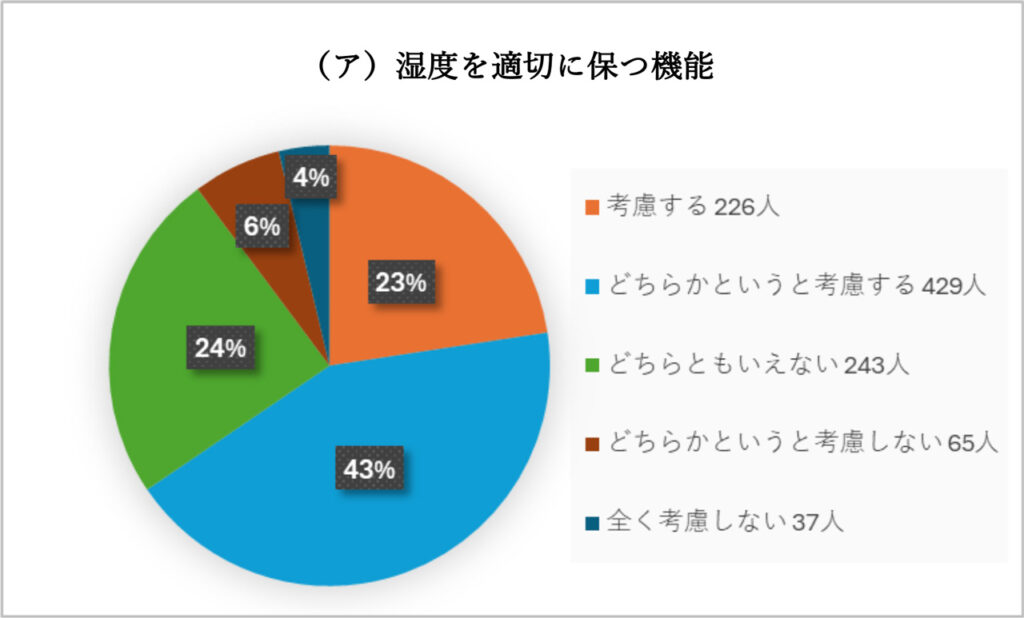
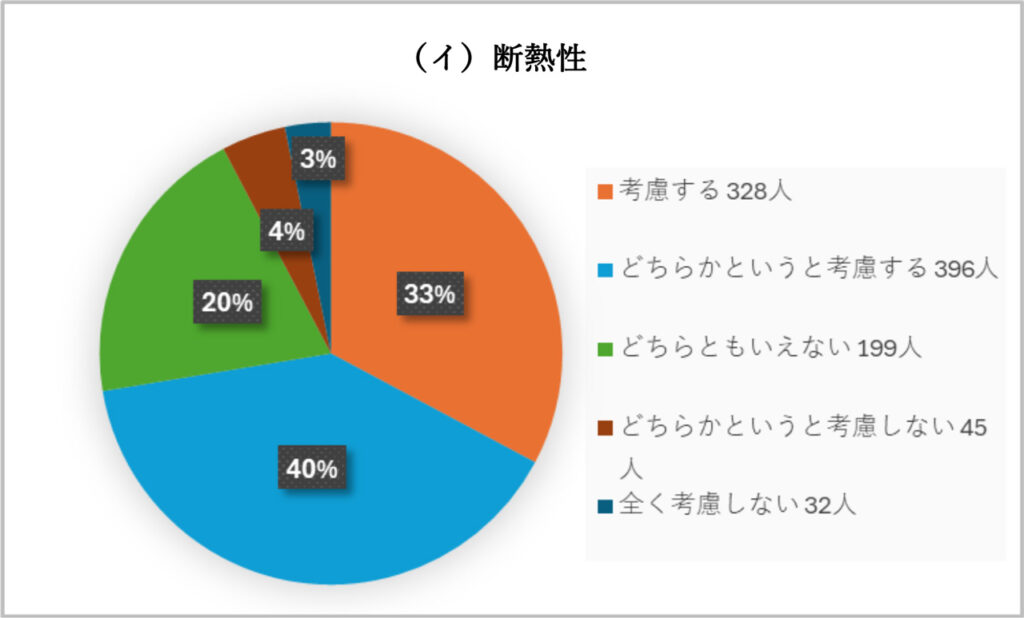
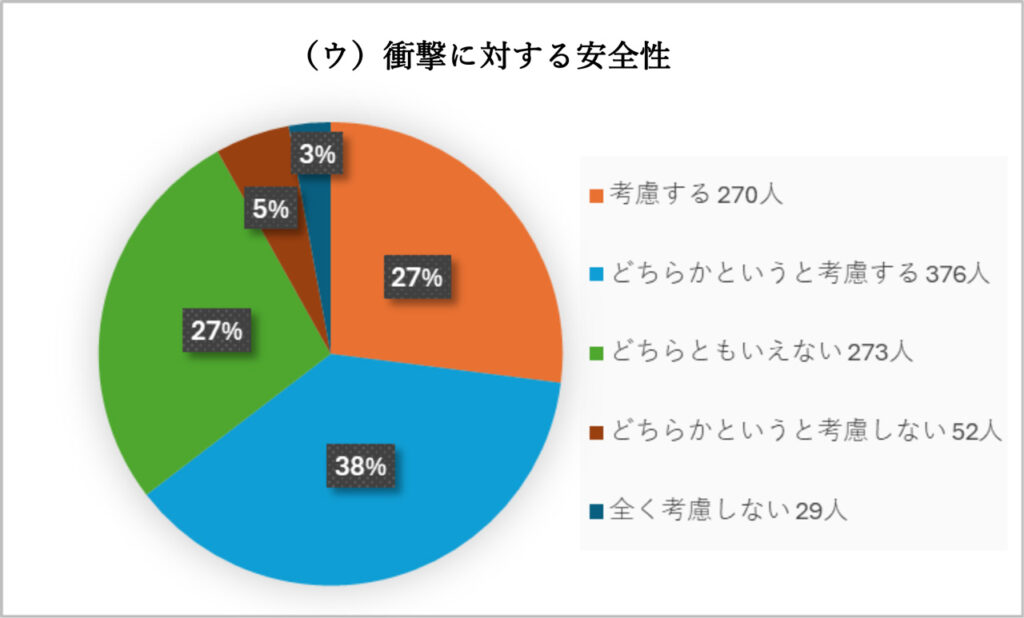
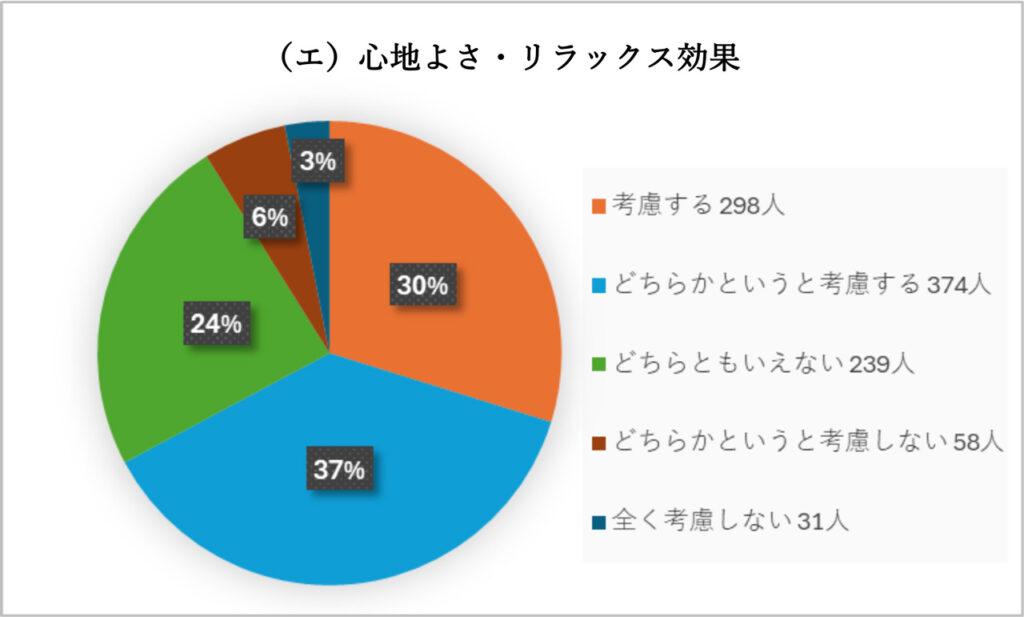
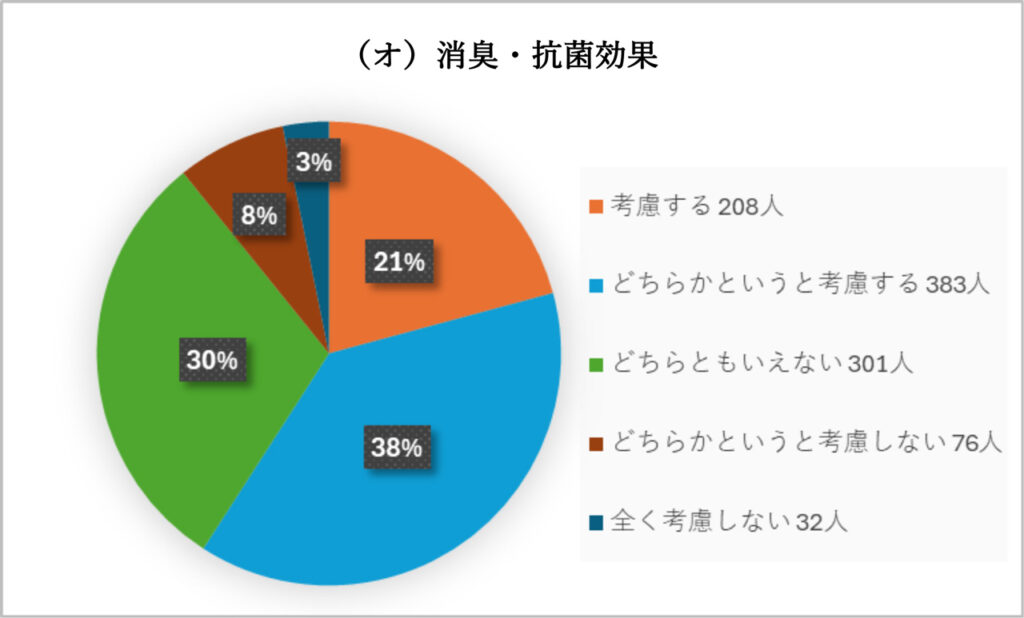
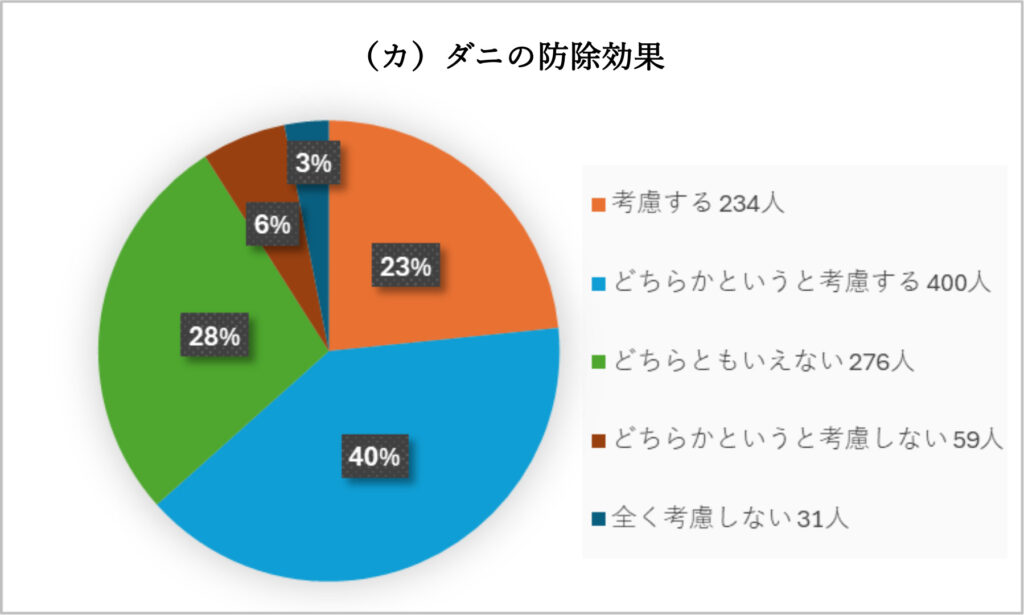
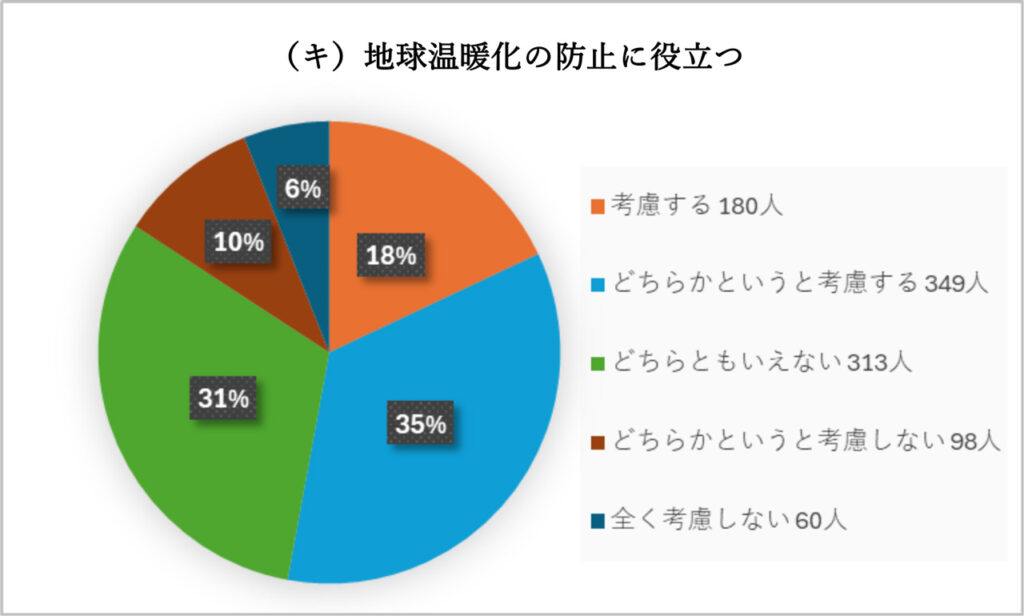
As an overall trend, items related to "functional aspects (heat insulation, humidity control, safety)" and "comfort (relaxing effect)" tended to be highly emphasized. On the other hand, the respondents were somewhat divided in their evaluation of "environmental contribution (prevention of global warming)" and "added value in terms of hygiene (deodorant/antibacterial, mite control).
The "consider" and "somewhat consider" items that are highly important to sei-katsu-sha are considered by more than 60% of the respondents.
(a) Function to maintain proper humidity: Comfort and health aspects are taken into consideration.
(b) Insulation: High level of interest in housing performance
(c) Safety against impact: High interest in safety aspects
(d) Comfort and relaxation: sensory comfort is also important.
(f) Effectiveness in controlling mites: There is a certain interest in sanitation.
Possible trends and possibilities among sei-katsu-sha based on items on which opinions are divided ("undecided" at 30% or more)
(e) Deodorant/antimicrobial effect: Difficulty in getting a real sense of the effect, or perhaps divided judgment?
(f) Effectiveness of mite control: Does the difficulty of visualizing effectiveness make a difference in judgment?
(k) Prevention of global warming: Possibility that the respondents feel it is not closely connected to their own lives.
Possible trends and possibilities of sei-katsu-sha based on the items that are not easily emphasized (more than 10% of "Do not consider" type).
(e) Deodorant and antibacterial effects: Possibility of low recognition and reliability
(K) Prevention of global warming: Environmental contribution is of low interest. Is it less of a priority in daily life?
The survey revealed that sei-katsu-sha are significantly more concerned about performance and comfort as a dwelling. On the other hand, the advantages of environmental considerations were less emphasized and did not appear to be directly linked to behavioral choices. It was also suggested that effects that are difficult to visualize may be judged to be insufficiently persuasive or explanatory.
Given the trends in sei-katsu-sha attitudes that can be seen from the survey results, it is important to have a communication method that is appropriate to the characteristics of the information in order to appropriately convey the appeal of wooden condominiums and, moreover, wooden cities.
First, housing performance, such as thermal insulation and humidity control functions, must be communicated with reliability. To this end, objective and persuasive appeals can be made by using quantitative data, third-party evaluations, and actual case studies that support performance.
On the other hand, it is difficult to convey the emotional appeal of wood, such as its warmth and relaxing effect, through numerical values. Therefore, it is effective to convey these attractions in a experiential way by introducing the voices of actual residents and their living conditions. By appealing to empathy and emotion, it is easier to attract sei-katsu-sha interest.
In addition, the values that are difficult to visualize, such as deodorant and antibacterial effects and contributions to global warming prevention, can be conveyed as more convincing information by linking them to specific lifestyle benefits, such as reduced heating and cooling costs and positive health effects.
Furthermore, the value of "eco-friendly housing" may gain the sympathy of more sei-katsu-sha if it is clearly stated from the viewpoint that it is not merely an environmental consideration, but a "choice to protect the livelihood of the next generation.
In order to promote wooden cities, it is also necessary to widely spread the characteristics and values of wooden condominiums, and by extension, wooden cities, throughout society by providing information based on the viewpoint of consumers. (Yuta Takizawa, Platinum Concept Network)